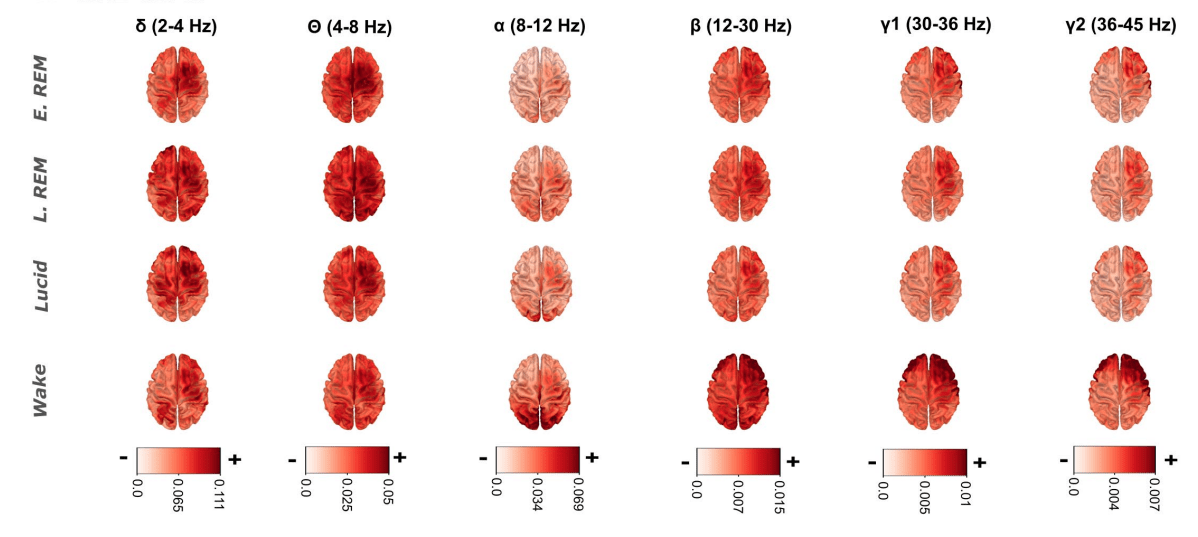Scientists from five countries, led by Çağatay Demirel and involving Kristoffer Appel, Sérgio Mota-Rolim, and Martin Dresler—regular researchers on lucid dreaming topics—conducted an experiment. They recruited 29 lucid dreamers who slept in the laboratory and were required to confirm dream lucidity through classic eye movement signals. The scientists compared participants’ brain waves during wakefulness, lucid, and regular dreams.
As a significant achievement, the authors managed to resolve a long-standing issue with 40-Hz spikes in the frontal areas. These spikes occur due to eye movements because lucid dreamers actively observe the surrounding space and confirm lucidity through eye movements. Currently, researchers emphasize that they have filtered out this interference from the data.
The scientists published a detailed report on the activity of different brain regions across all frequency ranges. One of their conclusions suggests that reduced theta activity contributes to lucidity. Also, compared to regular sleep, lucid dreaming shows reduced beta and delta activity. When compared to wakefulness, lucid dreaming is related to higher delta and lower alpha, beta, and gamma activity.
The researchers also focused on the temporo-parietal junction, which integrates visual, auditory, tactile, muscular, and vestibular information and which scientists presume is responsible for the sense of self and body. Dysfunction in this area leads to another phase state: out-of-body experiences.
The preprint of the article was published in April 2024 on bioRxiv.
Get all the latest news about lucid dreams via our channels on Telegram, Facebook, Twitter




